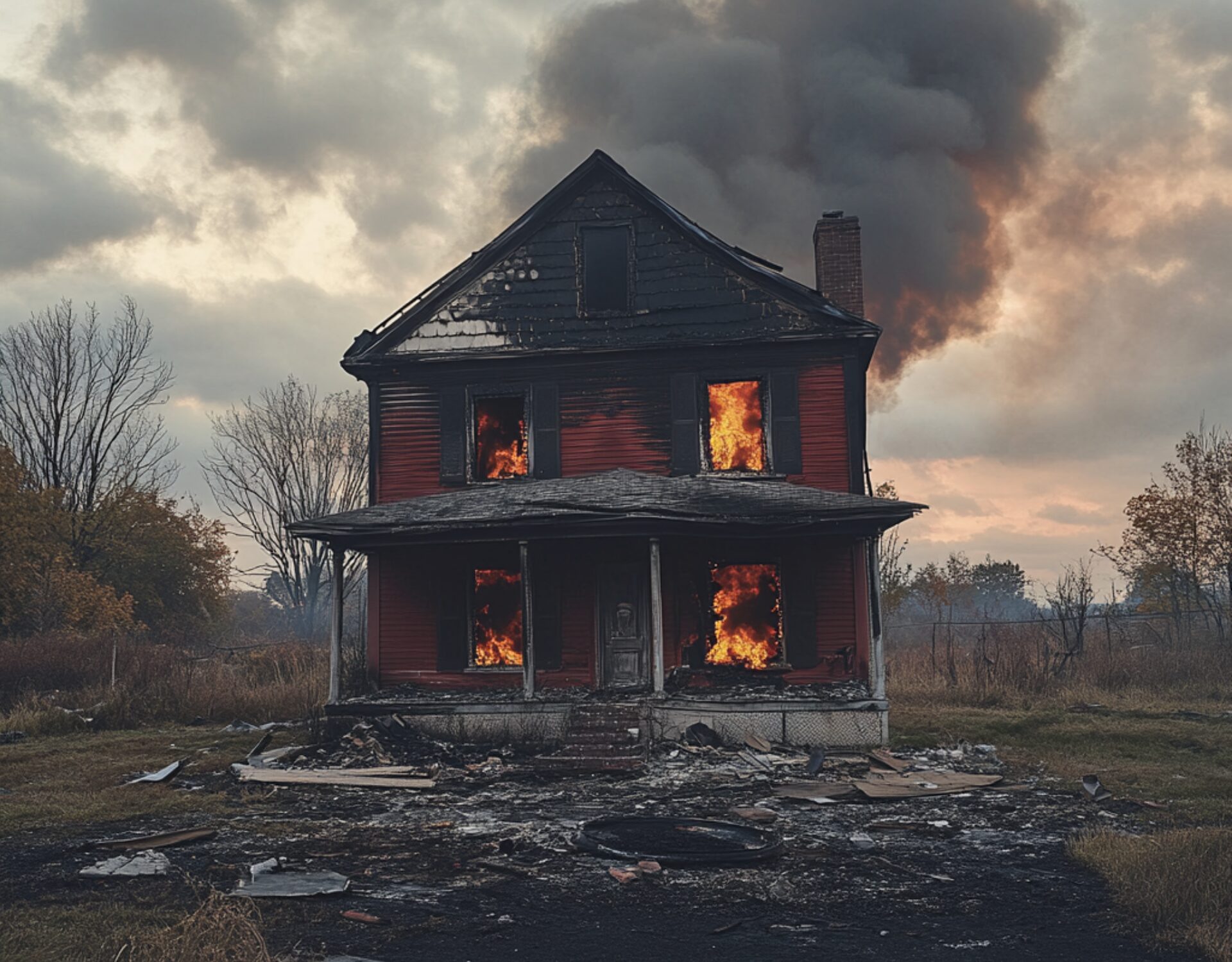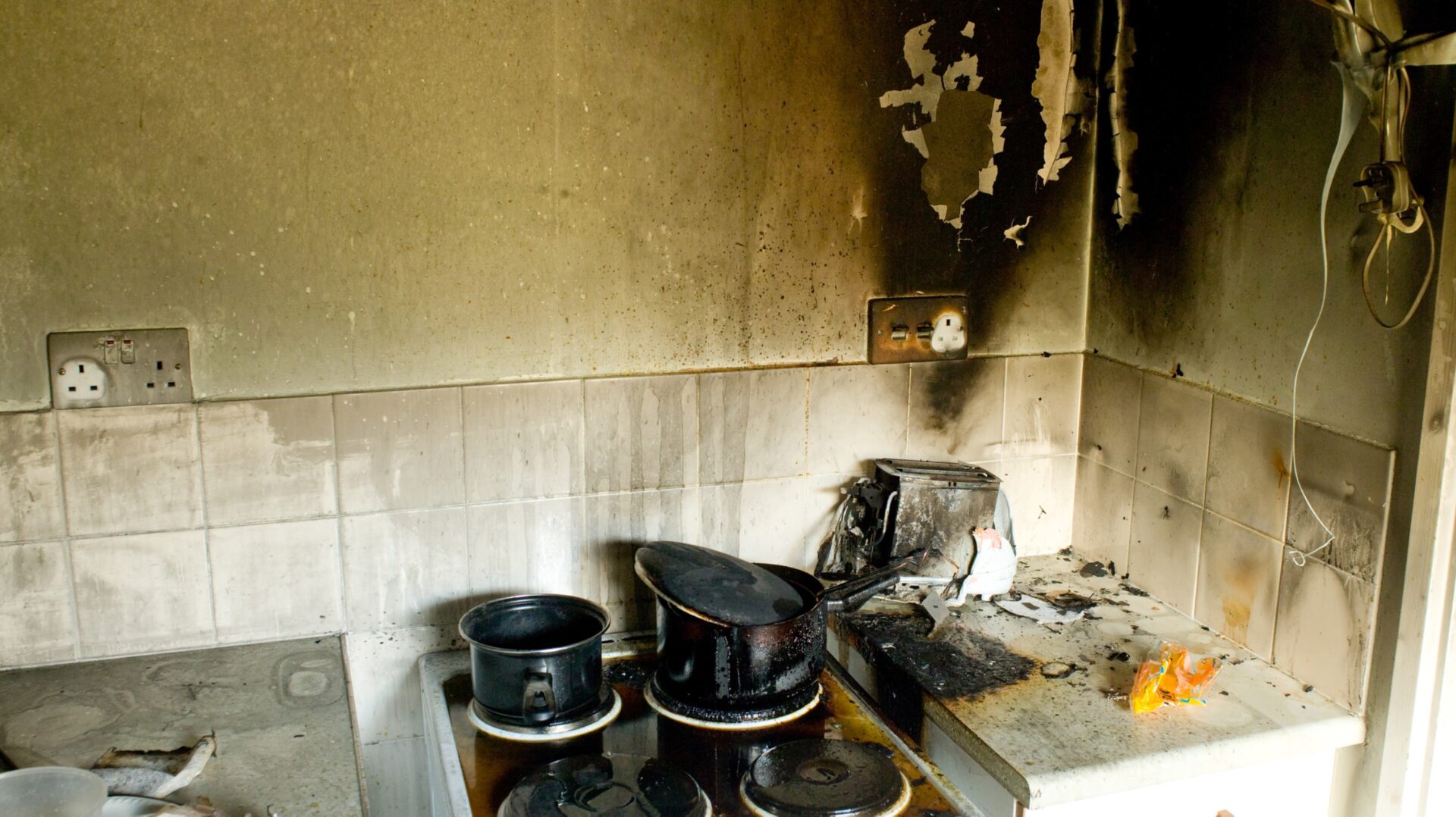
What Does Fire Damage Restoration Involve And How Long Does It Take?
By: 911 Water Damage Experts
Fire damage can leave a home in disarray, with both visible and hidden issues needing immediate attention.
Fire damage restoration is a comprehensive process that aims to bring your property back to its pre-fire condition, addressing everything from soot and smoke damage to structural repairs.
This process involves a series of steps tailored to the severity of the damage and the specific needs of your home.
Let’s get right into it!
Understanding Fire Damage Restoration
Fire damage restoration is essential for preserving the structural integrity of your property and preventing further deterioration.
Fires not only destroy physical structures but also leave behind smoke, soot, and water damage from firefighting efforts. Without professional restoration, these issues can worsen over time, leading to costly repairs and health risks.
Proper fire damage restoration ensures the safety and comfort of your home. Smoke and soot can cause respiratory issues, while water from extinguishing the fire can lead to mould growth. Prompt restoration minimises these risks and protects your investment in your property.
Fire damage typically falls into categories like structural damage, smoke damage, soot accumulation, and water damage.
Each type requires specific restoration techniques to ensure a thorough recovery. For instance, soot can penetrate porous materials like wood and fabric, causing discolouration and odours.
The Steps Involved In Fire Damage Restoration
Restoration professionals follow a structured process to ensure that all damage is addressed effectively. Each step builds on the previous one to restore your home to its original condition.
Initial Assessment And Damage Inspection
The restoration process begins with a detailed assessment of the damage. Professionals inspect the affected areas, evaluating the extent of fire, smoke, and water damage. This step helps determine the scope of work and the materials required for restoration.
Emergency Mitigation Measures
To prevent further damage, restoration teams take emergency measures like boarding up windows, covering damaged roofs, and removing water from firefighting efforts. These actions stabilise the property and prepare it for detailed cleaning and repairs.
Cleaning And Soot Removal
Cleaning involves removing soot, smoke residues, and odours from walls, ceilings, and other surfaces. Professionals use specialised equipment and cleaning agents to restore the property. This step also includes air purification to eliminate lingering contaminants.
Repairing Structural Damage
Structural repairs address weakened or destroyed parts of the building. This can include replacing damaged drywall, reinforcing beams, and restoring electrical and plumbing systems. These repairs are critical for ensuring the safety and stability of the home.
Restoring And Replacing Belongings
Furniture, clothing, and personal items affected by fire are cleaned, restored, or replaced. Restoration teams use advanced techniques like ultrasonic cleaning to salvage items whenever possible. Any irreparable belongings are documented for insurance claims.
Factors That Influence The Duration Of Fire Damage Restoration

The time required for fire damage restoration depends on various factors, each of which impacts the complexity and scope of the process.
The Extent Of The Fire Damage
Minor fires may require only a few days of restoration, while extensive damage involving multiple rooms or floors can take weeks or even months to address fully. The severity of the fire determines the amount of work needed.
The Type Of Materials Affected
Different materials respond to fire damage differently. Porous materials like wood and fabric absorb smoke and soot, making them harder to clean. Non-porous materials like metal or glass are easier to restore but may require special treatments for smoke stains.
The Size Of The Property
Larger properties naturally take longer to restore due to the increased amount of space and materials involved. Additionally, multi-level homes often require more complex restoration processes.
Coordination With Insurance Providers
Working with insurance providers can add time to the restoration process. While most restoration companies assist with claims, approvals and inspections can sometimes delay the work.
How To Choose A Fire Damage Restoration Company
Selecting the right company is crucial for ensuring quality work and peace of mind.
Not all restoration companies offer the same level of expertise or customer service.
Choose a fire damage restoration company with proven experience, positive reviews, and certifications in fire damage restoration. Look for 24/7 emergency services, as immediate action is critical for reducing damage.
Ensure the company has certified technicians trained in fire damage restoration. Industry standards like the Institute of Inspection, Cleaning, and Restoration Certification (IICRC) signify a high level of competence and professionalism.
Reputable companies provide clear timelines for their work, helping homeowners plan accordingly. Ask for a detailed breakdown of the restoration process and an estimated completion date.
The Cost Of Fire Damage Restoration
Fire damage restoration costs vary depending on the extent of the damage, the materials involved, and the services required. Understanding these costs helps homeowners prepare financially.
Typical restoration costs include cleaning soot and smoke, repairing structural damage, and replacing personal belongings.
On average, fire damage restoration costs range from $3,000 to $30,000, depending on the severity of the fire. Home insurance often covers fire damage restoration, but coverage details vary.
Policies usually cover structural repairs, cleaning, and replacement of belongings. Ensure you understand your policy to maximise your claim.
FAQs
What is the first step in fire damage restoration?
The first step in fire damage restoration is a thorough inspection of the property to assess the extent of the damage. This step identifies the areas that require immediate attention and helps create a restoration plan.
How long does fire damage restoration typically take?
The duration of fire damage restoration varies depending on the extent of the damage. Minor damage may take a few days, while extensive damage could take several weeks or even months to repair fully.
Can I stay in my home during the restoration process?
Staying in your home during restoration depends on the severity of the damage. If structural integrity or air quality is compromised, it is safer to relocate temporarily.
What is the difference between smoke damage and soot damage?
Smoke damage refers to the odours and residues left behind by the fire, while soot damage involves the fine particles of carbon that settle on surfaces. Both require specialised cleaning techniques.
How is structural damage assessed after a fire?
Structural damage is assessed through visual inspections and advanced tools like moisture meters and infrared cameras. Professionals evaluate walls, floors, and ceilings to ensure the building’s stability.
Are fire-damaged belongings always replaceable?
Not all fire-damaged belongings can be replaced. However, many items can be restored using advanced cleaning methods like ultrasonic cleaning, which removes soot and odours from delicate items.
What types of cleaning methods are used in fire damage restoration?
Fire damage restoration uses various cleaning methods, including dry cleaning for delicate surfaces, wet cleaning for durable materials, and air scrubbing to remove airborne contaminants.
Does insurance cover the full cost of fire damage restoration?
Insurance often covers most of the restoration costs, but the extent of coverage depends on the policy. Some policies may require homeowners to pay deductibles or exclude certain items.
How can I prevent further damage before restoration begins?
You can prevent further damage by covering exposed areas, turning off utilities, and removing water left by firefighting efforts. Professional mitigation services can also help stabilise the property.
What certifications should a fire damage restoration company have?
A reputable fire damage restoration company should hold certifications like the IICRC and have trained technicians with experience in handling fire and water damage.
Conclusion
Fire damage restoration is a vital process that requires expertise, planning, and attention to detail. By understanding the steps involved and choosing the right restoration company, you can ensure your property is restored efficiently and effectively. Acting quickly after a fire will minimise damage, reduce costs, and help you regain a sense of normalcy sooner.
If you have any questions about our article “What Does Fire Damage Restoration Involve And How Long Does It Take?” or need water damage restoration services contact us at 1-833-WE-DRY-IT or connect with us on social media.
Mould Removal Restoration Articles
5 Signs You Have Mould Growing In Your Walls
“Can I Remove Mould Myself?” Our Mould Removal Experts Have Answers
7 Must-Know Reasons Why You Should Get A Mould Inspection Before Buying A House
Does Mould Attract Bugs? Yes And Here’s What Kind And Why
How To Remove Mould From The Attic [Mould Prevention Tips Inside]
How Rain Causes Mould Growth-Prevention Tips Included
Must-Know Tips: How To Remove Mould In Your Basement
Water Damage Restoration Articles
What you can expect from a fire damage restoration company
Water damage prevention tips from the most common problems we’ve seen
Top causes of water damage in commercial buildings and how to find them
Must-know water damage tips: What to do after your house floods
What does good water damage restoration look like?
DIY water damage restoration and the hidden dangers
How to choose the right water damage company
Flast floods: What to do before, during and after a flash flood
What to do when your attic leaks?
Fire Damage Restoration Articles
How to clean up after a house fire
Fire damage restoration checklist
Fire damage tips: 6 hazards property owners miss
How smoke from fires can negatively affect your health
What are the most common causes of house fires?
10 helpful smoke damage cleaning tips
Related Water Damage Services
Fire damage restoration services
Water damage restoration services
Emergency cleanup services
Mould removal services
Weather damage services

